Most downloaded
- Page Path
-
- HOME
- BROWSE ARTICLES
- Most downloaded
"Most downloaded" Articles are from the articles published in 2023 during the last six months.
- Review Article
- General Pediatrics
- Bridging the gap: autism spectrum disorder in children in the United States and worldwide: a narrative review (44 times)
- Sandhya J. Kadam, Malika Goel
- Clin Exp Pediatr. 2025;68(11):852-857. Published online October 2, 2025
-

The prevalence of autism is increasing worldwide. The United States has the highest numbers, likely due to the availability of better treatment options. However, global disparities exist, especially in low-resource settings in which stigma, underdiagnosis, and limited services hinder care. A coordinated international approach emphasizing early screening, inclusive policies, and culturally sensitive support systems can bridge this gap and improve the outcomes for children with autism and their families worldwide.
- Original Article
- Endocrinology
- Efficacy of leuprolide acetate versus triptorelin pamoate administered every 3 months for treatment of central precocious puberty (44 times)
- Thanaporn Thaneetrakool, Suphab Aroonparkmongkol, Nattakarn Numsriskulrat, Vichit Supornsilchai, Suttipong Wacharasindhu, Khomsak Srilanchakon
- Clin Exp Pediatr. 2025;68(1):91-96. Published online November 6, 2024
-

Question: What are the differences in efficacy between leuprolide acetate and triptorelin pamoate administered every 3 months for the treatment of central precocious puberty (CPP)?
Finding: There were no significant intergroup differences in luteinizing hormone suppression or predicted adult height at the end of treatment in girls with CPP.
Meaning: Leuprolide acetate and triptorelin pamoate have comparable efficacy for treating CPP.
- General Pediatrics
- Effect of online infant care training and postpartum counseling based on Meleis' transition theory on mothers' readiness for care and breastfeeding: a randomized controlled trial (43 times)
- Fatma Şule Bilgiç, Gülçin Bozkurt
- Clin Exp Pediatr. 2024;67(10):521-530. Published online September 27, 2024
-

Question: Do interventions based on Meleis' transition theory affect mothers' readiness for baby care and breastfeeding?
Findings: We found a statistically significant difference between the intervention and control groups in mothers' readiness for newborn care and breastfeeding (P<0.001).
Meaning: This intervention increased breastfeeding rates while ensuring that mothers were ready to care for their babies and prepared for the role of motherhood.
- Hematology
- Impact of Xmn1 polymorphism on hydroxyurea therapy in children with HbE-β non-transfusion dependent thalassemia: a cohort study (43 times)
- Saheli Roy, Paramita Bhattacharya, Atanu Kumar Dutta, Mrinal Kanti Das
- Clin Exp Pediatr. 2025;68(6):437-444. Published online February 3, 2025
-

Question: Does the T allele of Xmn1 polymorphism favorably influence hydroxyurea efficacy in children of Eastern descent with fetal hemoglobin (HbE)-β nontransfusion dependent thalassemia (NTDT)?
Finding: Decrease in transfusion requirement and increase in height following hydroxyurea therapy was noted in both groups, however, change in CT was more critical than that in CC genotype.
Meaning: T allele of Xmn1 polymorphism favorably influences hydroxyurea efficacy in children with HbE-β NTDT.
- Editorial
- Other
- Beyond the eye: a multidisciplinary perspective on managing pediatric myopia (43 times)
- Eoi Jong Seo
- Clin Exp Pediatr. 2025;68(8):566-568. Published online July 18, 2025
-
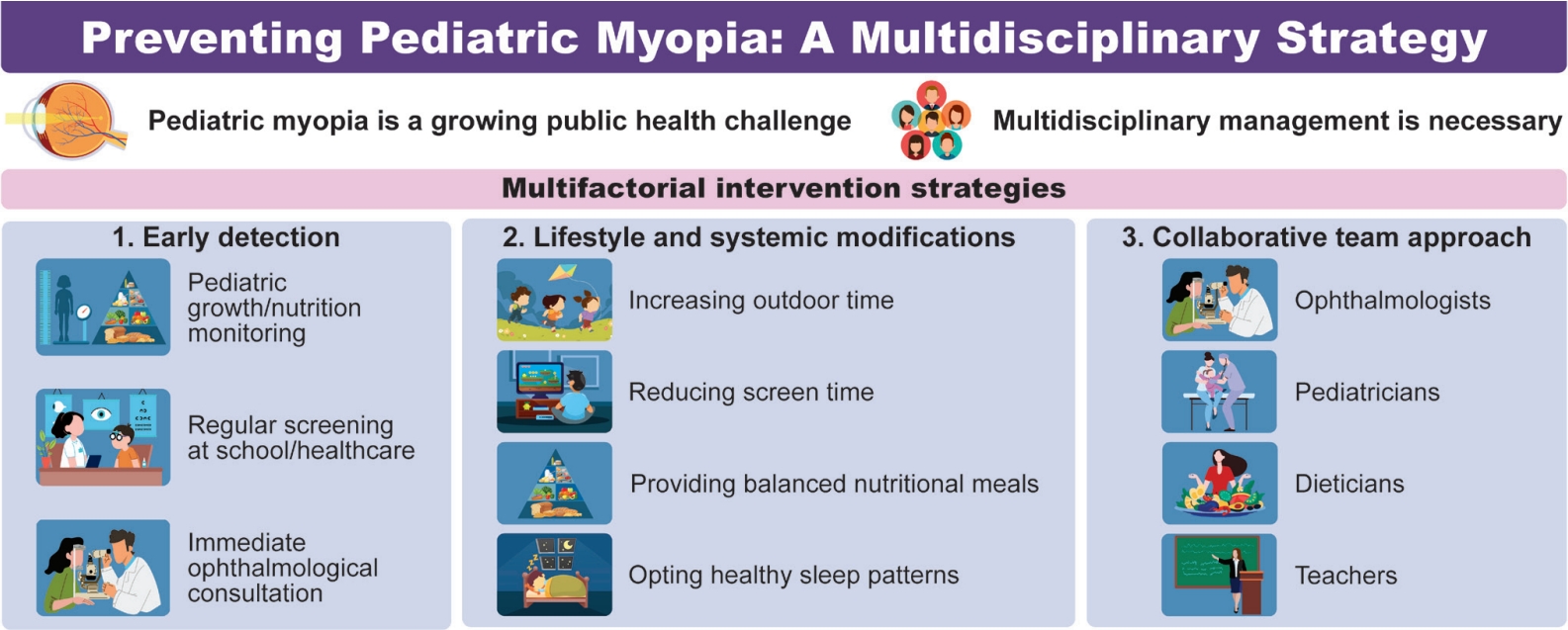
Myopia is a growing global public health concern because of its association with irreversible vision loss such as myopic traction maculopathy, rhegmatogenous retinal detachment, and glaucoma. The effective prevention of myopia in childhood requires a multidisciplinary approach that integrates ophthalmologic care with lifestyle, nutrition, and sleep interventions. Early detection through regular visual screening in schools and primary care settings and timely ophthalmology referrals are critical to preventing high myopia.
- Original Article
- Cardiology
- Unsustainable and overworked: unpacking the challenges faced by pediatric cardiologists and cardiac surgeons in Korea (43 times)
- Soo In Jeong, GI Beom Kim, Sung Hye Kim, Jae Yoon Na, Hong Ju Shin, Sin Weon Yun, Lucy Youngmin Eun, Sang Yun Lee, Chang-Ha Lee, Kwang Ho Choi, Seul Gi Cha, Mi Young Han
- Clin Exp Pediatr. 2025;68(9):732-741. Published online August 6, 2025
-

Question: What are the key challenges affecting pediatric cardiologists and cardiac surgeons in Korea?
Finding: Excessive workloads, low procedural volumes, and legal risks contribute to high burnout. Regional disparities limit skill maintenance and threaten workforce sustainability.
Meaning: Targeted policies ensuring fair workloads, legal protections, and regional support are essential to stabilizing the pediatric cardiac workforce and maintaining high-quality care.
- Nutrition
- Energy drink consumption among Korean adolescents: prevalence and associated factors (41 times)
- Jee-Seon Shim, Jeong Mi Lee
- Clin Exp Pediatr. 2024;67(10):531-539. Published online September 24, 2024
-

Question: How prevalent is energy drink consumption among Korean adolescents and what are the associated factors?
Findings: The prevalence of energy drink consumption among Korean adolescents increased from 3.2% in 2014 to 12.2% in 2019. Energy drink consumption varies according to sociode-mographic and individual factors.
Meaning: Policies and educational strategies are needed to reduce energy drink consumption in adolescents.
- Pulmonology
- Polysomnographic features of children with obesity: body mass index predict severe obstructive sleep apnea in obese children? (41 times)
- Rungrat Sukharom, Prakarn Tovichien, Kanokporn Udomittipong, Pinyapach Tiamduangtawan, Wattanachai Chotinaiwattarakul
- Clin Exp Pediatr. 2025;68(1):80-90. Published online November 6, 2024
-

Question: How Common is obstructive sleep apnea (OSA) in obese children? OSA is common in obese children, even without habitual snoring.
Finding: Among the subjects, 60.6% had positional OSA, 40.2% had rapid eye movement-related OSA, 59.8% had desaturation, 20.5% had sleep-related hypoventilation, and 5.0% had obesity hypoventilation syndrome. Body mass index (BMI) and neck and waist circumferences were significantly associated with severe OSA.
Meaning: We recommend screening obese children (BMI > 29.2 kg/m2) for OSA.
- Review Article
- Gastroenterology
- Liver fibrosis in children: a comprehensive review of mechanisms, diagnosis, and therapy (40 times)
- Elif Ozdogan, Cigdem Arikan
- Clin Exp Pediatr. 2023;66(3):110-124. Published online December 19, 2022
-
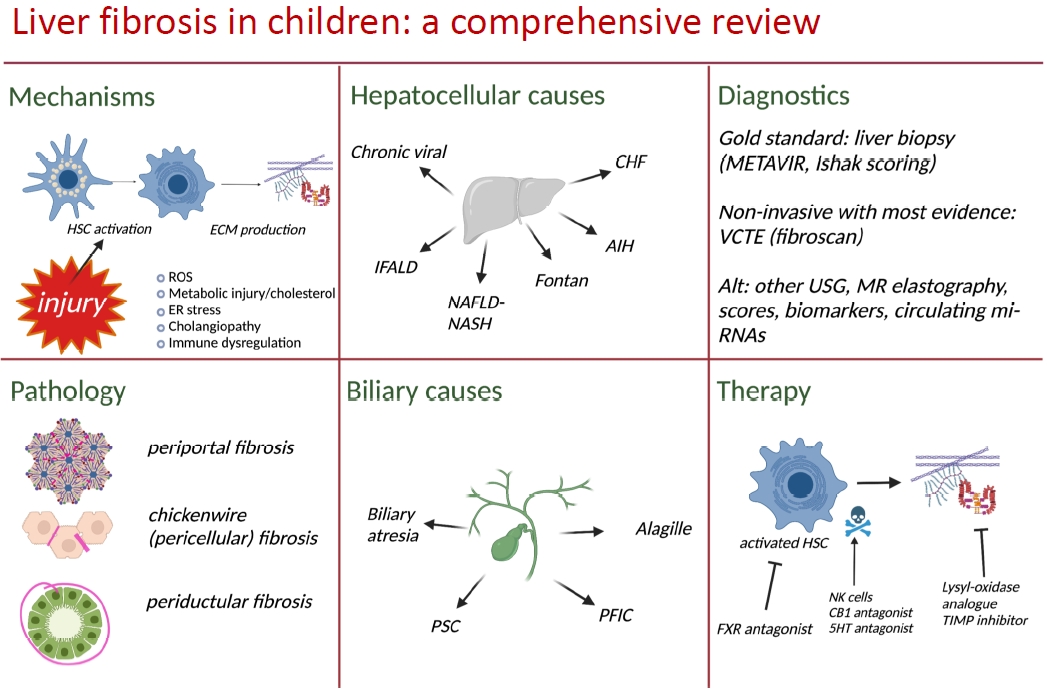
· Chronic liver diseases in children are heterogenous but converge in the common pathway of fibrosis.
· Much of the literature on mechanisms of fibrogenesis focus on adults but pediatric physiology has documented differences.
· Understanding of these distinctions are necessary to define, treat, and prevent fibrosis.
· Current management of liver fibrosis relies heavily on liver biopsy. Multiple tools have shown high diagnostic performance in pediatric and adult populations. Large, multicenter studies are needed for validation.
- Nutrition
- Association of gut microbiota with obesity in children and adolescents (40 times)
- Ky Young Cho
- Clin Exp Pediatr. 2023;66(4):148-154. Published online November 16, 2022
-

The gut microbiota is an emerging factor in the development of pediatric obesity, which is affected by renowned risk factors such as diet, lifestyle, and socioeconomic status. This review aimed to describe the association between the gut microbiota and childhood obesity.
- Editorial
- Immunology
- Systemic autoinflammatory disorders: autoinflammatory and autoimmune disorders (40 times)
- Young Dae Kim
- Clin Exp Pediatr. 2023;66(10):439-440. Published online July 4, 2023
-
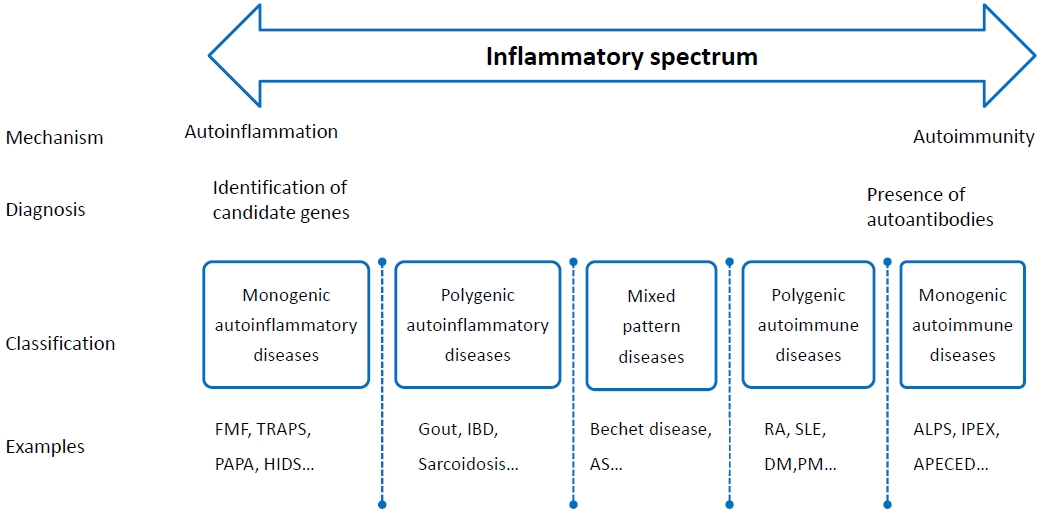
· Systemic autoinflammatory disorders (SAIDs) typically have an early onset in life, and may have close relatives may have similar disease.
· SAIDs should be suspected in any patient, especially children, who experience persistent or recurrent inflammatory episodes that fail to fit the pattern of other established diseases.
· Advancements in the understanding of autoinflammation will provide novel diagnostic and therapeutic options for SAIDs patients.
- Review Article
- General Pediatrics
- Metabolic complications of obesity in children and adolescents (40 times)
- Hyunjin Park, Jung Eun Choi, Seunghee Jun, Hyelim Lee, Hae Soon Kim, Hye Ah Lee, Hyesook Park
- Clin Exp Pediatr. 2024;67(7):347-355. Published online November 16, 2023
-

· Pediatric obesity increases the risk of metabolic complications (insulin resistance, dyslipidemia, nonalcoholic fatty liver disease) and long-term cardiovascular diseases.
· A new obesity definition and various indicators (continuous metabolic syndrome score, pediatric simple metabolic syndrome score, fatty liver index) have been proposed to evaluate children’s susceptibility to metabolic disorders.
· Laboratory and body composition tests in pediatric screenings can identify groups at high risk of metabolic complications of obesity.
- Rheumatology
- Double-negative T cells in pediatric rheumatic diseases (40 times)
- Dimitri Poddighe, Tilektes Maulenkul, Kuanysh Dossybayeva, Gulsamal Zhubanova, Zaure Mukusheva, Lyudmila Akhmaltdinova
- Clin Exp Pediatr. 2024;67(12):632-640. Published online September 12, 2024
-
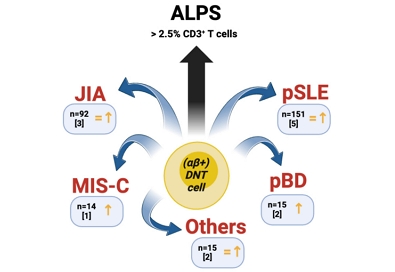
Double-negative T (DNT) cells appear to be increased in several pediatric rheumatic diseases and this finding may be correlated with disease activity to some extent. However, due to significant heterogeneity in several methodological aspects, further investigations in rheumatic children are needed to assess the potential relevance of DNT cells as biomarkers and clarify their immunopathological role.
- Editorial
- Other
- Further research on impact of microplastics on children's health is essential to protecting future generations (40 times)
- Jongin Lee, Dong-Wook Lee
- Clin Exp Pediatr. 2025;68(5):359-361. Published online November 13, 2024
-
· The ecological impacts of microplastics have been documented. It was recently recognized that they can directly or indirectly cause diseases in humans.
· There are few established methods for assessing human exposure to microplastics.
· Standardization of exposure assessments and large-scale epidemiological studies are required to explore the human effects of microplastics.
- Original Article
- Nutrition
- Differential effects of dietary and physical activity interventions on adiposity of children with obesity (40 times)
- Anekchoke Tangtongsoong, Chonnikant Visuthranukul, Yuda Chongpison, Sirinuch Chomtho
- Clin Exp Pediatr. 2025;68(5):370-378. Published online February 3, 2025
-

Question: How do dietary intake and physical activity affect body mass index (BMI) z scores and adiposity among children with obesity?
Finding: Higher dietary protein and fiber intakes were significantly associated with a decrease in BMI z scores and adiposity among children with obesity.
Meaning: Optimizing dietary interventions by focusing on protein and fiber intakes could be an effective strategy for managing childhood obesity.
- Review Article
- Other
- Use of virtual reality in children in a broad range of medical settings: a systematic narrative review of recent meta-analyses (39 times)
- Emily Antonovics, Grammatina Boitsios, Thomas Saliba
- Clin Exp Pediatr. 2024;67(6):274-282. Published online May 21, 2024
-
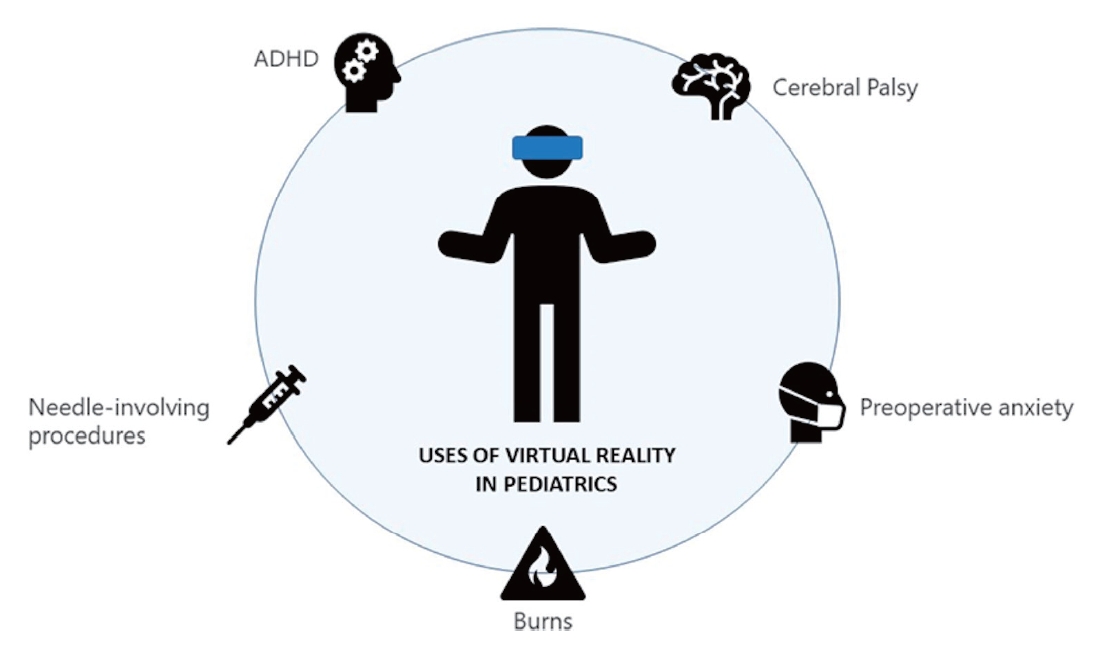
· Virtual reality (VR) is becoming increasingly common for entertainment and in medical settings.
· VR is useful for treating children with cerebral palsy.
· VR can help with attention deficit/hyperactivity disorder symptoms.
· VR can decrease pain perception in children undergoing burn wound care.
· VR can reduce preoperative anxiety.
· VR can reduce fear and pain during needle-involving procedures.
- Original Article
- Gastroenterology
- Outcome of pediatric inflammatory bowel disease in Asian children: a multinational 1-year follow-up study (39 times)
- Pornthep Tanpowpong, Suporn Treepongkaruna, James Guoxian Huang, Kee Seang Chew, Karen Sophia Calixto Mercado, Almida Reodica, Shaman Rajindrajith, Wathsala Hathagoda, Yoko Kin Yoke Wong, Way Seah Lee, Marion Margaret Aw
- Clin Exp Pediatr. 2025;68(3):247-256. Published online November 13, 2024
-

Question: Short-term (1-year) follow-up data in pediatric patients with inflammatory bowel disease (IBD), especially in Southeast Asian countries, are limited.
Finding/Meaning: Abdominal pain and pallor rates remained high at 1 year after IBD diagnosis. Three independent factors of 1-year clinical remission for Crohn disease were oral prednisolone, antibiotic, and immunomodulator use at 1-year follow-up. A history of weight loss at diagnosis was the only independent risk factor of IBD flare.
- Nephrology (Genitourinary)
- C3 glomerulopathy in children: experience at a resource-limited center (38 times)
- Soumya Reddy, Abhishek Ghante, Mahesha Vankalakunti, Anil Vasudevan
- Clin Exp Pediatr. 2025;68(4):311-318. Published online November 28, 2024
-

Question: What are the clinicopathological features and outcomes of pediatric C3 glomerulopathy (C3G) in resource-limited settings?
Finding: Children with C3G in resource-limited settings have significant morbidities, and most experience kidney sequelae despite treatment. Electron microscopy was performed in only 50% of our patients, while none received complement assays or genetic testing.
Meaning: Pediatric C3G presentation, management, and kidney outcomes vary. Its thorough evaluation and management are challenging in resource-limited settings.
- Clinical Note
- General Pediatrics
- Aplasia cutis congenita with unique vascular malformation and cranial hypoplasia: a case in a preterm infant (38 times)
- Yasufumi Sakata, Natsumi Fujii, Sadahiro Nomura, Yoshihiro Azuma, Hiroki Hamano, Hidenobu Kaneyasu, Seigo Okada, Kazumasa Takahashi, Shunji Hasegawa
- Clin Exp Pediatr. 2025;68(6):472-474. Published online March 11, 2025
-
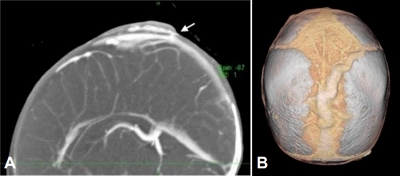
- Review Article
- Hematology
- Iron deficiency in children with a focus on inflammatory conditions (37 times)
- Na Hee Lee
- Clin Exp Pediatr. 2024;67(6):283-293. Published online May 21, 2024
-

· Iron deficiency has important effects on neurodevelopment and the immune system in children.
· Hepcidine plays an important role in iron homeostasis.
· Diagnosis and treatment of iron deficiency in chronic inflammatory disease are important for patients' quality of life and disease course.
- Neurology
- Role of nonpharmacological concussion management in children: systematic review of randomized controlled trials (37 times)
- Andre Marolop Pangihutan Siahaan, Alvin Ivander, Rr. Suzy Indharty, Steven Tandean, Anastasia Grace Milenia Ginting, Masrini Ginting, Felix Khosasi, Elbert
- Clin Exp Pediatr. 2024;67(11):569-579. Published online October 28, 2024
-

The long-term effects of concussion for pediatric patient remains unclear. Children and teenagers do not experience or recover from concussion in the same manner as adults do. Concussions can cause a variety of anatomical and functional alterations. Nonpharmacological approach in pediatric concussion management is an understudied field of research with significant ability to affect prognosis and quality of life. Active rehabilitation and occupational therapy were especially promising.
- Adolescence Medicine
- Diet-related behaviors affecting health and substance use among children and adolescents (37 times)
- Ji-Hyun Seo, Sochung Chung
- Clin Exp Pediatr. 2024;67(12):664-671. Published online October 31, 2024
-
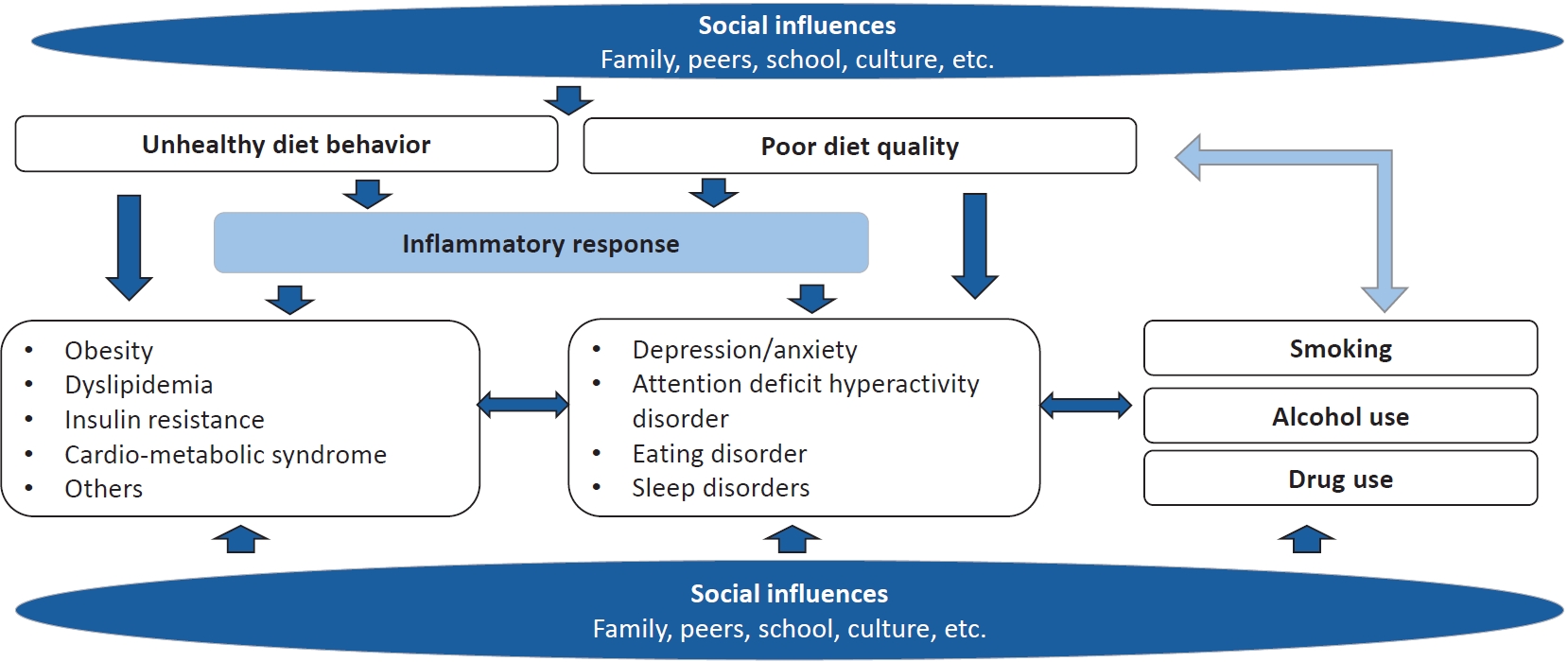
· Diet behaviors in children and adolescents are influenced by environmental and sociocultural factors.
· Unhealthy diet behaviors and poor diet quality are the main contributing factors to noncommunicable diseases and mental health problems during childhood and adolescence.
· Smoking and alcohol drinking in children and adolescents may be associated with unhealthy diet behavior or poor diet quality.
- Original Article
- Infection
- Construction and validation of predictive models for intravenous immunoglobulin–resistant Kawasaki disease using an interpretable machine learning approach (36 times)
- Linfan Deng, Jian Zhao, Ting Wang, Bin Liu, Jun Jiang, Peng Jia, Dong Liu, Gang Li
- Clin Exp Pediatr. 2024;67(8):405-414. Published online July 23, 2024
-

Question: Is there a reliable model to predict intravenous immunoglobulin (IVIG)-resistant Kawasaki disease (KD)?
Finding: We constructed 5 machine learning models to predict IVIG-resistant KD. Extreme gradient boosting (XGBoost) model was superior to logistic, support vector machine, light gradient boosting machine and multiple layers perception models. The SHAP (SHapley Additive exPlanations) value interpreted the contribution of each feature in XGBoost model.
Meaning: XGBoost model showed the excellent performance to predict IVIG-resistant KD with explainable and visualizable machine learning algorithm.
- General Pediatrics
- Role of proper postnatal care in continued exclusive breastfeeding among young Indonesian mothers (36 times)
- Wahyu Triadmajani, Shinta Prawitasari, Abdul Wahab
- Clin Exp Pediatr. 2024;67(12):686-693. Published online September 12, 2024
-
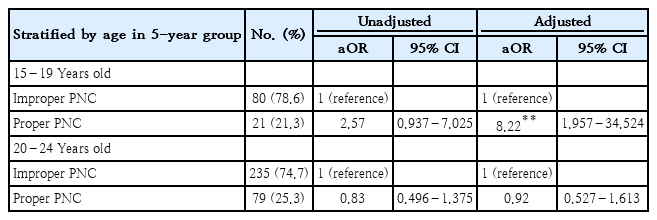
Question: Is proper postnatal care (PNC) associated with exclusive breastfeeding (EBF) practice among young Indonesian mothers?
Finding: Proper PNC elevates the likelihood of EBF among Indonesian adolescent mothers aged 15–19 years.
Meaning: Breastfeeding services should be provided during the early postnatal period to support EBF practice among adolescent mothers. High-quality PNC is a tailored intervention for vulnerable populations.
- Clinical Note
- Gastroenterology
- Abdominal pain in a young girl: a twist in the tale (36 times)
- Upasana Ghosh, Ankit Agrawal, Umesh Shukla, Vikas Jain, Deeksha Bhalla
- Clin Exp Pediatr. 2025;68(5):395-397. Published online March 11, 2025
-
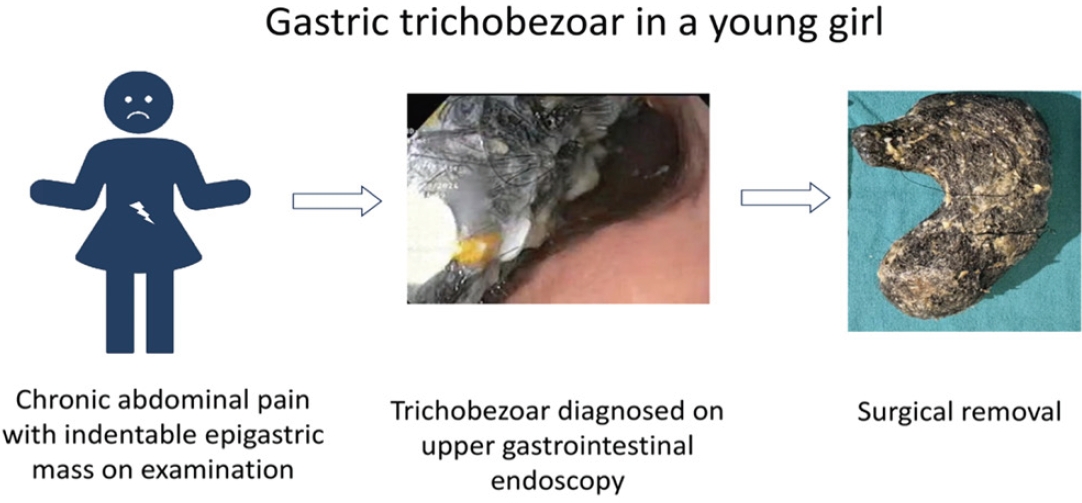
· Chronic abdominal pain caused by a gastric trichobezoar is extremely rare among children.
· An indentable epigastric mass is characteristic and upper gastrointestinal endoscopy is diagnostic of a gastric trichobezoar.
· Symptomatic large trichobezoars usually require surgery.
· Neuropsychiatric disorders are often associated with gastric trichobezoar, making a psychiatric evaluation of paramount importance.
- Original Article
- Gastroenterology
- Somatic symptom severity during acute illnesses among children with functional gastrointestinal disorders (36 times)
- Rattanachart Sirinil, Anundorn Wongteerasut
- Clin Exp Pediatr. 2025;68(8):587-593. Published online March 11, 2025
-
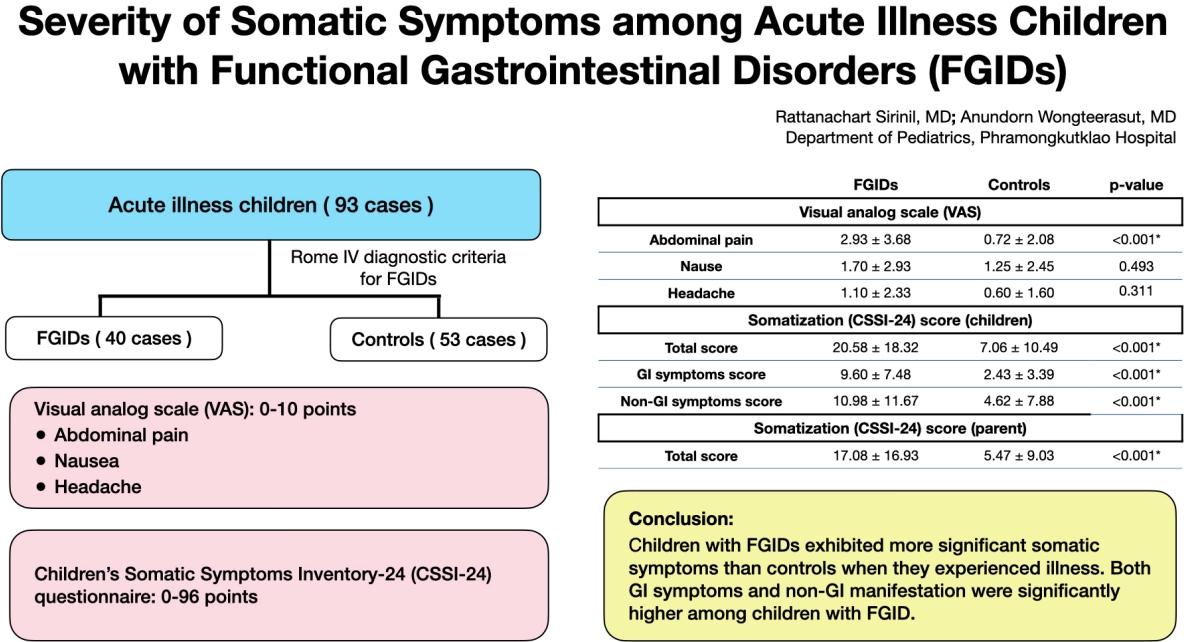
Functional gastrointestinal disorders (FGIDs) are associated with various somatic symptoms measured using a visual analogue scale and the Children’s Somatic Symptoms Inventory-24 questionnaire. Children with FGIDs exhibited more significant somatic symptoms than controls during acute illnesses. Gastrointestinal (GI) and non-GI manifestations are significantly more common in children with FGIDs.
- General Pediatrics
- Effectiveness of Kinder Lebensqualität Fragebogen (KINDL) and Children’s Somatic Symptom Inventory-24 (CSSI-24) for measuring postacute sequelae of COVID-19 in children: a diagnostic validation study (36 times)
- Lawrence Shih-Hsin Wu, Pei-Chi Chen, Xiao-Ling Liu, Shu-Tsen Liu, Chi-Hung Wei, Yu-Lung Hsu, Kai-Sheng Hsieh, Huan-Cheng Lai, Chien-Heng Lin, Chieh-Ho Chen, An-Chyi Chen, I-Ching Chou, Wen-Jue Soong, Hui-Ju Tsai, Chung-Ying Lin, Jiu-Yao Wang
- Clin Exp Pediatr. 2025;68(11):944-951. Published online September 12, 2025
-

Question: Although children with postacute sequelae of coronavirus disease 2019 (PASC) may experience persistent symptoms that affect their quality of life (QoL), a screening tool for identifying high-risk children is lacking.
Finding: Kinder Lebensqualität fragebogen (KINDL) and Children's Somatic Symptom Inventory-24 (CSSI-24) were significantly correlated. An optimal KINDL cutoff score (74.75) detected those at high risk of a reduced QoL.
Meaning: Integrating KINDL and CSSI-24 into routine pediatric outpatient care may enable timely identification and interventions for children at risk of PASC-related impairments.
- Review Article
- General Pediatrics
- Protecting our future: environmental hazards and children’s health in the face of environmental threats: a comprehensive overview (35 times)
- Jungha Lee, Hyo-Bin Kim, Hun-Jong Jung, Myunghee Chung, So Eun Park, Kon-Hee Lee, Won Seop Kim, Jin-Hwa Moon, Jung Won Lee, Jae Won Shim, Sang Soo Lee, Yunkoo Kang, Young Yoo; The Environmental Health Committee of the Korean Pediatric Society
- Clin Exp Pediatr. 2024;67(11):589-598. Published online October 31, 2024
-

· Exposure to air pollutants cause allergic and respiratory diseases as well as chronic kidney disease.
· Adequate physical activity and proper nutrition are essential for children to maintain good health.
· We must educate people about the harmful effects of noise, blue light, heavy metals and smoke.
· Government and society must actively decrease environ-mental hazards.
- Original Article
- Other
- Balance assessment with decreased base of support for children with disabilities (35 times)
- Guilherme M. Cesar, Madison Giebler, Thad W. Buster, Judith M. Burnfield
- Clin Exp Pediatr. 2024;67(12):718-724. Published online November 11, 2024
-
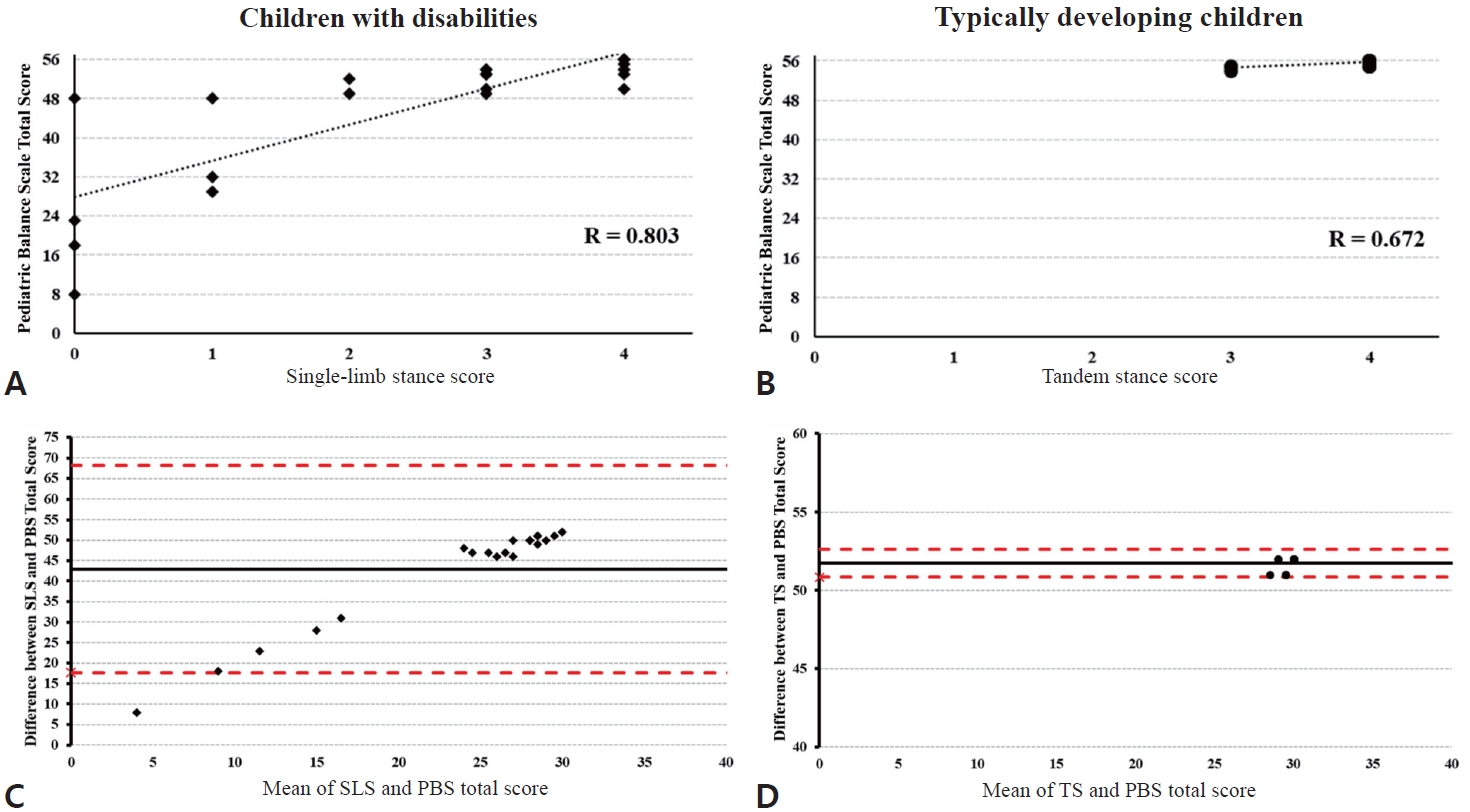
Question: Can a balance task with narrowed base of support indicate overall functional balance control in children with disabilities?
Finding: While single-limb standing could explain overall balance control for children with disabilities, it was unrelated with balance control for typically developing children.
Meaning: One balance task with narrowed base of support can be used as practical assessment of balance abilities for children with disabilities when allocated session time is of concern.
- Basic Research
- Linezolid mitigates tissue injury in experimental model of pediatric testicular torsion: TLR-4/MAPK/NF-κB involvement (35 times)
- Moein Ghasemi, Abolfazl Basiri, Houman Kazemzadeh, Mohammad Amin Manavi, Seyed Mohammad Tavangar, Ahmad Reza Dehpour, Hamed Shafaroodi
- Clin Exp Pediatr. 2025;68(9):700-711. Published online August 26, 2025
-

Question: What pharmacological strategies can limit ischemia-reperfusion injury in pediatric patients with testicular torsion?
Finding: In a rat model of testicular torsion, linezolid reduced oxidative stress, inflammation, and tissue injury via the Toll-like receptor 4/mitogen-activated protein kinase/nuclear factor kappa beta pathway.
Meaning: Linezolid may offer a pharmacological approach to attenuate testicular damage in pediatric patients with testicular torsion, warranting further clinical investigation.
-

-
-
6.02024CiteScore98th percentilePowered by
-
Impact Factor3.6
-
- TOPICS
- ARTICLE CATEGORY
- Editorial Office
-
Korean Pediatric Society
#1606 Seocho World Officetel, 19 Seoun-ro, Seocho-ku, Seoul 06732, Korea
Tel: +82-2-3473-7306 Fax: +82-2-3473-7307 E-mail: office@e-cep.org
Clinical and Experimental Pediatrics is an open access journal. All articles are distributed under the terms of the Creative Commons Attribution NonCommercial License (http://creativecommons.org/licenses/by-nc/4.0/)
Copyright © 2025 by Korean Pediatric Society.











